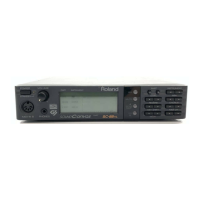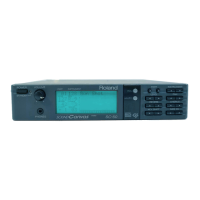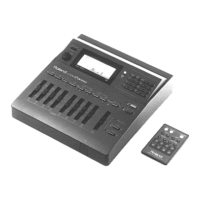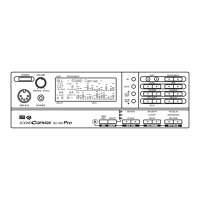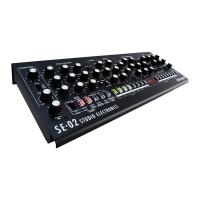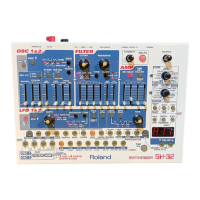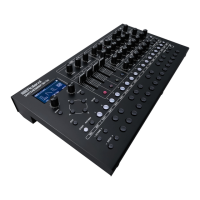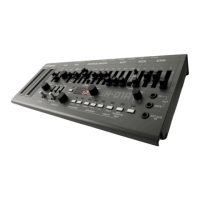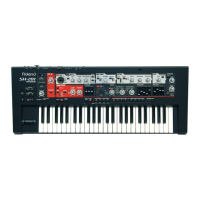59
About Parts and Parameters
❏ CAf ~ (Channel aftertouch ~)
Some MIDI keyboards transmit messages known as aftertouch when pressure is ap-
plied to the keyboard after playing a note. Channel aftertouch (also known as chan-
nel pressure) transmits only one data value even if two or more notes are being
pressed. When a sound generator receives this message, it can modify the sound in
various ways. The CAf~ parameters specifies how the sound will change when the
message is received. At the factory settings, no change will occur when this messages
is received.
* Check whether your MIDI keyboard is able to transmit aftertouch messages.
❏ CC1 ~
Some MIDI keyboards allow controller numbers to be assigned to the sliders. When
these sliders are moved, messages of the specified controller number are transmit-
ted, causing the sound to be modified. The CC1~ parameters specifies how the
sound will change when messages of the corresponding control number are re-
ceived.
First use the CC1 Controller Number parameter (p.57) to select the controller num-
ber that you are assigning.
<The latter half of the parameter name>
* When these settings are at 0, there will be no effect.
❏ ~ Range -24 ~ +24 (Bend Range is +/-0–+24)
These parameters specify the maximum pitch change that will occur when the cor-
responding message is received. A setting of 12 allows 1 octave of change, and a set-
ting of 24 allows 2 octaves of change. With a setting of 0, there will be no pitch
change.
❏ ~ Cutoff (~Cutoff frequency) -64–+63
These parameters specify how the cutoff frequency will change when the corre-
sponding message is received. Higher values will cause the cutoff frequency to rise.
Positive (+) settings allow the sound to be made brighter, and negative (-) settings
allow the sound to be made more mellow.
❏ ~ Amp (~Amplitude) -64–+63
These parameters specify the way in which the sound will change when the corre-
sponding message is received. Higher values allow a greater increase in volume.
❏ ~ LFO Rate -64–+63
These parameters specify the way in which the LFO frequency will change when the
corresponding message is received, adjusting the speed at which the sound is mod-
ulated or varied. Higher values allow the modulation or variation to be speeded up.
❏ ~ LFO Pitch 0–10–127
These parameters specify the way in which the depth of the vibrato effect (cyclic
modulation of pitch) will change when the corresponding message is received.
Higher values allow the modulation effect to be increased.
❏ ~ LFO TVF 0–127
These parameters specify the way in which the depth of the growl effect (cyclic mod-
ulation of tone) will change when the corresponding message is received. Higher
values allow the growl effect to be increased.
❏ ~ LFO TVA 0–127
These parameters specify the way in which the depth of the tremolo effect (cyclic
modulation of volume) will change when the corresponding message is received.
Higher values allow the tremolo effect to be increased.
For some sounds, the pitch
may not rise as high as
specified by the Range
setting.
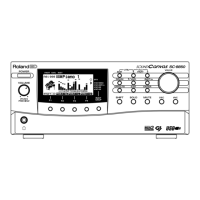
